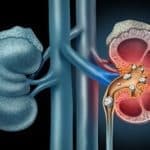Alcohol Addiction Overview
About Alcohol Misuse
Treatment Programs
Alcohol Use and Addiction
Alcohol addiction is prevalent in the United States. In 2021, almost 29.5 million people (10.6%) in the U.S. age 12 and older suffered from alcohol use disorder (AUD).1,2 While AUD is a deadly and devastating condition, it is treatable.2
This page will cover the risk factors for developing alcohol addiction, the adverse effects of alcohol, the signs of alcohol addiction, and the treatment services available at Laguna Treatment Center.

What Is Alcohol Use Disorder?
Alcohol use disorder (AUD) is the clinical term for alcohol addiction. In basic terms, AUD is characterized by someone who is unable to control compulsive drinking despite it having significant negative effects on their life.3

Alcohol Use Disorder Risk Factors
A complex interplay of genetic and environmental factors can influence a person’s risk for developing alcohol use disorder.4
Having one, or even several, risk factors does not guarantee that someone will struggle with alcohol addiction; however, the following factors increase the risk of developing AUD:4,5

Harmful Effects of Alcohol
Dangers & Adverse Effects of Excessive Alcohol Use
Excessive drinking has both immediate risks and dangers attributed to prolonged, chronic alcohol use.11
Health hazards due to excessive drinking may include immediate dangers like:11
- Falls, drownings, burns, and car collisions are more likely to occur while under the influence of alcohol. Although even moderate levels of drinking (about 2 standard drinks in a 3-hour period) have been shown to double the odds of injury, the risk increases sharply at higher levels of consumption (e.g., binge drinking). 12
- Acts of violence (e.g., homicide, domestic assault, sexual assault, suicide).
- Alcohol poisoning, a medical emergency resulting from high blood-alcohol concentration.
- Unintended pregnancy or sexually transmitted diseases (STDs) caused by risky sexual behavior, including unprotected sex and sex with multiple partners.
In addition to increasing the chances of developing AUD, chronic drinking over an extended period is linked to conditions like:11
- Hypertension (high blood pressure).
- Weakened immune system.
- Mental health problems (e.g., depression, anxiety).
- Social problems (e.g., unemployment, family problems)
- Liver cirrhosis.
- Heart disease.
- Various forms of cancer.
Alcohol Withdrawal Symptoms
When a person who engages in heavy and prolonged drinking suddenly stops drinking or significantly reduces the amount they drink, withdrawal symptoms cause significant distress and functional impairment.3,13
Alcohol withdrawal usually begins within several hours to a few days after stopping or significantly reducing alcohol use after extended periods of heavy drinking (e.g., 8 drinks of more per day for multiple days).3
Alcohol withdrawal symptoms include two or more of the following symptoms, which cause clinically significant distress or functional impairment:3
- Autonomic hyperactivity (sweating profusely or having a pulse rate that is higher than 100 beats per minute).
- Hand tremor.
- Insomnia.
- Nausea or vomiting.
- Transient visual, tactile, or auditory hallucinations (seeing, feeling, or hearing things that are not there).
- Psychomotor agitation.
- Anxiety.
- Generalized tonic-clonic seizures.
Medical detoxification, where a person has some form of 24-hour medical care, is generally the preferred setting for detoxification, as withdrawal symptoms can vary greatly in severity and symptoms can be unpredictable. Detox involves ensuring a person is medically stable as well as services such as correcting nutritional deficiencies caused by alcohol misuse and administering medications to help reduce the severity and likelihood of dangerous withdrawal symptoms, such as seizures.14
Delirium Tremens
Delirium tremens (DT) is a severe form of alcohol withdrawal experienced by approximately 1-2% of those with a history of alcohol misuse.15 It usually lasts 3 to 4 days but sometimes up to 8 days.15 Signs and symptoms of DT include:15
- Tachycardia (rapid heart rate).
- Hypertension (high blood pressure).
- Anxiety.
- Delirium (e.g., reduced awareness of surroundings, difficulty concentrating, psychomotor disturbances, sleep disturbances).
- Visual, auditory, or tactile hallucinations (seeing, hearing, or feeling things that are not there).
- Seizures.
DT is a medical emergency and can be fatal. Death rates among those who experience DT are between 1 and 4%, which can be reduced with prompt, appropriate treatment.15
Alcohol Use Disorder Treatment in Orange County, CA
The consequences of untreated AUD are potentially severe. Fortunately, there are evidence-based treatment methods that can effectively help you or your loved one get sober and remain in recovery.2
Depending on a person’s needs, alcohol addiction treatment may include medical detox, behavioral therapy, and treatment of any co-occurring mental health disorders.2
Laguna Treatment Center is a facility that provides alcohol rehab in Orange County. We offer different levels of addiction rehab to meet the needs of the different severity levels of AUD as well as each patient’s individual needs.
Call to begin the rehab admissions process. Many can get the treatment they need by using insurance to pay for rehab or one of our other rehab payment options.

Read More About Alcohol Misuse
American Addiction Centers (AAC) is committed to delivering original, truthful, accurate, unbiased, and medically current information. We strive to create content that is clear, concise, and easy to understand.
While we are unable to respond to your feedback directly, we'll use this information to improve our online help.


